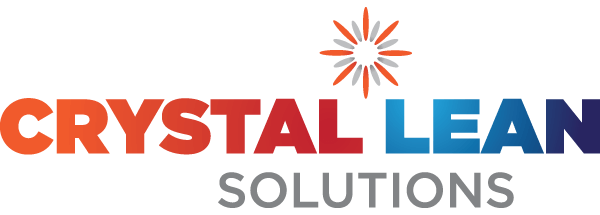Critical success factors of the Last Planner® System
Last Planner® System (LPS) is a Powerful Lean System that radically enhances the quality of planning and execution of a Project. Glen Ballard (Co-Creator of the LPS) describes it as a “socio-technical system”. While most of the current focus is on the technical aspects of the system, here we will explore the critical success factor to LPS; the “socio” element and how your behaviour impacts the outcome of the LPS.
Key Questions that the Last Planner® System Addresses
The Last Planner® System is designed to create a series of conversations at the various stages of the system. Each stage asks specific question;
- Milestone Planning; What are the key project milestones?
- Phase Pull Planning; what are the key activities and their specific handoff requirements to complete the phase?
- Look ahead planning; What are the
 issues/constraints associated with any tasks in the plan? Who will take ownership to remove the issue and by when will it be achieved?
issues/constraints associated with any tasks in the plan? Who will take ownership to remove the issue and by when will it be achieved? - Weekly Work Plan; What planned activities are we in a position to promise that we will complete over the coming week? What is plan B?
- Daily Huddle. What did we achieve compared to what we promised and what learnings can we take from that? What system improvements can we make?
 Ownership within the Last Planner® System
Ownership within the Last Planner® System
To ensure honest answers to the questions above, the system is designed to build trust and team confidence and the team see the plan as “our plan”. While time is required to develop the System, the true success centres around your behaviours as key roles in the implementation. The Key Roles include:
The Last Planners: Discipline leads/Foremen. People with authority to commit to the plan
Site Leadership/Facilitator: The Leader of the various meetings involved in the system
Executive Leadership: Top management of the organisation
Behaviours Drive Last Planner® System Results
To drive the right conversations and deliver the right results, your behaviour is the key differentiator. Table 1 outlines key behaviours that will drive positive results.
Last Planners |
System Leader/ Facilitator |
Executive Leadership |
| Reliable Promising
Makes promises and owns them. Realistic but knows when to say NO. Does not “Sandbag” the plan |
Reliable Promising
Challenges commitments in an open and safe manner. Seeks consensus on the plan |
Reliable Promising
Delegates planning to the site team and trusts the process |
| Transparency
Ensure integrity in the data and not “playing with numbers”. Understands that the data generated over the life of the project provides rich information that will guide the organisation to significant system improvements. |
Transparency
Create a safe environment for the team to provide honest feedback on performance. Ensure integrity in the data and not “playing with numbers”. Takes positive action based on the data. |
Transparency
Sees metrics as the “voice of the Process”. Takes positive action based on the metrics to improve the system. Supports site team when issues are escalated from site. |
| Accountability
Is open and honest with commitments being made and the reasons for variance when commits are missed. Engages with root cause analysis and commits to process improvement.
|
Accountability
When things don’t go to plan, challenge what failed in the process and not the people. Challenges executive leadership for solutions for escalated issues. Reports back on actions taken to improve the system |
Accountability
Responds to the metrics with a systemic view. Asks for evidence of the root cause analysis. Addresses escalated issues that cannot be addressed by the site team. Ensures best practices are transferred to other sites. |
| Problem Solving
When things go wrong, involve the right people to determine the root cause and identify actions for improvement
|
Problem Solving
When things go wrong, involve the right people to determine the root cause and identify actions for improvement
|
Problem Solving
When things go wrong, involve the right people to determine the root cause and identify actions for improvement.
|
| Coach
Encourage team to generate improvement ideas |
Coach
Understands that change takes time and is patient with people. Encourage open 2-way communication. Create a safe environment for team participation
|
Coach
Ask the right questions to support team learning and show commitment/belief in the process |
Table 1 Key Behaviours of Roles within LPS
Suggestions for Improvement
As effectiveness of the LPS starts with how you behave, the following suggestions will help you on  journey, as this is a skillset that you will need to learn for true LPS effectiveness.
journey, as this is a skillset that you will need to learn for true LPS effectiveness.
- Complete a gap analysis. For each behaviour in Table 1, rate how you align to them
- Closely match
- Somewhat match
- Little Match
- Understand the reasons for any gaps identified
- Identify actions.
Examples can include:
- Complete Training
Programs can include Last Planner® System, Management of Metrics, Problem Solving, Human Error Prevention Training, Facilitator Training, Management of Change Training
- Work with a Mentor
This person will support you in any technical support around LPS
- Work with a Coach
This person will support you in behavioural improvements that you would like to work on
- Set Up LPS Process Confirmation
Conclusion
Last Planner® System is a powerful Lean System that can transform they way you manage your business, delivering significant results in terms of Quality, Safety, Cost and Schedule. As this system is a Collaborative based approach, critical to its success are the behaviours of the people involved. Reflect on your own behaviours against the Ideal behaviours of the system identified in Table 1 and seek to continuously improve them. Be honest and empathetic with yourself on this own journey. Work on any gaps identified. By being true to the intent of the Last Planner® System everyone will deliver client requirements, enjoy their workday and go home safe.




